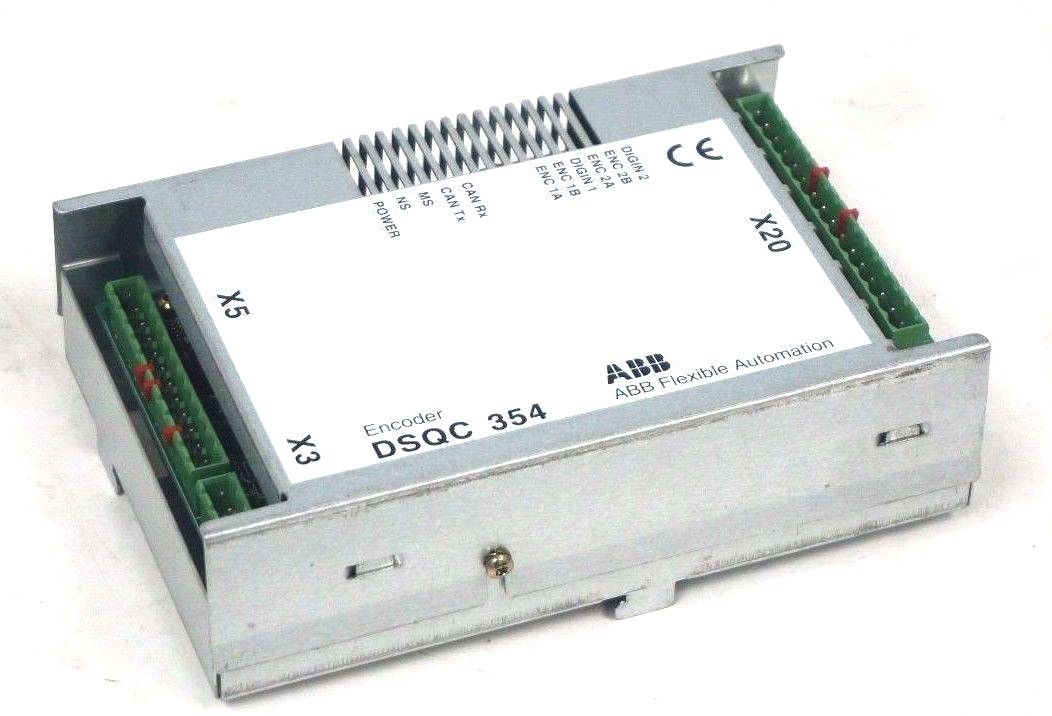ABB IMDSI14 Digital Input Modules
The IMDSI1 Digital Input modules provide 16 separate digital signals into the INFI 90® OPEN system for processing and monitoring. It interfaces process field inputs with the INFI 90 OPEN Strategic Process Management System.
A contact clo sure or switch is an example of a device that supplies a digital signal. Control modules provide the control functions; I/O modules provide the inputs and outputs.
Four variations of the IMDSI1 modules are presented in this instruction:
• IMDSI12 – 24 VDC, 48 VDC, 125 VDC or 120 VAC inputs.
• IMDSI13 – 24 VDC inputs.
• IMDSI14 – 48 VDC inputs.
• IMDSI15 – 125 VDC or 120 VAC inputs.
The IMDSI12 is the functional equivalent of the existing IMDSI02 module with the restriction that the IMDSI02 offers selectable debounce filter times of 1.5 milliseconds (fast) and 17 milliseconds (slow) and the IMDSI12 module offers only the 17 milliseconds (slow) debounce filter time. The slow debounce filter is used in the majority of digital input applications.
Any of the IMDSI1 modules may be substituted in place of an IMDSI02 where appropriate jumper settings are used. For example, an IMDSI13 module may be substituted for an IMDSI02 module that has all its jumpers set for 24 VDC with a slow debounce filter. Figure 1-1 shows the INFI 90 OPEN communication levels and the position of the digital input modules within these levels.

This section explains the inputs and input circuitry, control logic, logic power and connections for the IMDSI1 Digital Input modules. The DSI is a digital input interface to a multi-function processor (MFP), multi-function controller(MFC), or logic master module (LMM).
These control modules provide the control functions. A control module communicates with its I/O modules on a I/O expander bus as shown in Figure 1-1. Each I/O module on the I/O expander bus has a unique address set by address dipswitch S1 (Fig. 2-1) Digital field inputs are voltages of 24 VDC, 48 VDC, 125 VDC or 120 VAC rms. These voltages indicate an energized (ON) field device; a 0 volt input indicates a de-energized (OFF) field device.
The DSI have a fixed input debounce filter for DC inputs to allow for contact debounce time (17 millisecond response time).
The IMDSI13 (+24 VDC) module and the IMDSI14 (+48 VDC)module have a fixed configuration and do not require any jumper selections. The IMDSI15 (+125 VDC/120 VAC) module has jumpers to select DC or AC mode. The IMDSI12 (+24, +48,+125 VDC or 120 VAC) module has jumpers to select the DC or AC mode and jumpers to select the working voltage. Refer to the Installation section for an explanation of the jumper con nections.
NOTE: Due to the number of pins on the P3 connector, twelve inputs are separate while the remaining two pairs share input termi nals.
The positive (+) side of point 7 and 8 are tied together in each group (refer to Table 5-3). These points must use the same contact voltage (24 VDC, 48 VDC, 125 VDC or 120 VAC) set by the jumpers on the IMDSI12 module, or according to the relevant IMDSI1 mod ule working voltage
Figure 2-1 is a block diagram illustrating signal flow through the module. The input isolation block consists of current limit ers and optocouplers to isolate the 16 field inputs from the module circuitry. The input circuits provide 1500 VDC isola tion between input and logic circuitry and other input chan
nels. Refer to Table 1-5.
Digital input high impedance provides additional (passive) pro tection from high energy transients of field digital inputs Figure 2-1. Digital Input Module Block Diagram Input signal path and low isolation capacitance allow protec tion against fast transient-burst disturbance.
The threshold detection block circuits test the input voltage to determine if it is at the proper voltage level to indicate an ON or OFF state. The output of this comparator is sent to a read buffer in the control logic block. If an input is energized, it also causes a corresponding input status LED on the front panel to light.
The control logic block consists of buffers that hold the input and status byte values. The I/O expander bus interface allows the control module to read these bytes
When an input signal is present at the proper voltage level, a zener diode conducts (turns on) to cause current flow through an optocoupler. Configurable jumpers (on IMDSI12) or fixed resistors (on IMDSI13, IMDSI14 or IMDSI15) select the turn-on threshold and input voltage.
The optocoupler output causes a comparator output to go low.
This lights a corresponding status LED on the module front panel to indicate an energized input; the I/O expander bus interface transmits a logic 1 to the control module on the I/O expander bus.
When no input signal is present, no current flows through the optocoupler. The front panel LED does not light and the DSI transmits a logic 0 on the bus. Figure 2-2 shows the digital input circuit.
NOTE: The components inside the dashed boxes in Figure 2-2 are mounted only on the module versions stated in the note.







